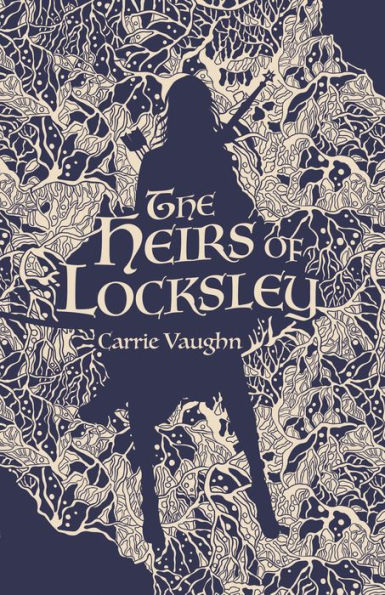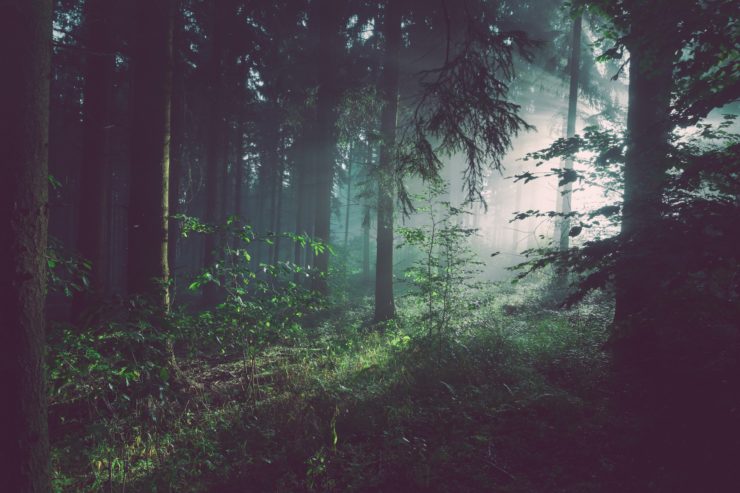Give me your Fangorns and your Lothloriens, your Green Hearts and your Elvandars. Evoke your Haunted Forest Beyond the Wall complete with creepy weirwoods, your Steddings and your Avendesoras. Send me pleasant dreams about Totoro’s Japanese Camphor and the Forest Spirit’s kodama-filled canopy. Or, y’know, tree cities full of Wookiees instead of elves. I will take them all!
Forests in speculative fiction novels have a special place in my heart. Especially tree-cities.
In real life, all forests seem magical to me. I can’t think of a culture that has not populated them with myths or religious figures. In Australia, First Nations people will tell you about ancient spirits dwelling in our forests whether tropical, temperate or dry. Proud Lebanese will tell you that their cedar forests were used for Solomon’s Temple and to build Noah’s ark. They may not know that those same cedar forests appeared in the Epic of Gilgamesh, circa 2100 BC. Those heroes fought off monsters and cut down the trees. In contrast, the characters of Dan Simmons’ Hyperion travel on treeships beyond the stars…
Take me there. I’m with you! As long as trees are, too.
Here are a mere eight of my favourite fictional forests:
The Magic Faraway Tree by Enid Blyton
When telling people I’ve written a novel about a magical forest, the most common response so far has been: “You mean like The Magic Faraway Tree?” This staple of English-speaking childhoods was indeed beloved by my smallish self, not only for the magic tree which grew all kinds of leaves, fruit and nuts on the one plant but the vast cast of magical creatures which made the tree their home.
The Jungle Books by Rudyard Kipling
Of course, the jungles of the subcontinent aren’t fictional. It’s just that this was the first book where I saw a wilderness treated remotely in fiction like an ally and protector, with its own languages and laws, instead of a hostile thing to be conquered. Wiser people than I have much valid criticism to heap on this book, and yet I still sometimes dream of stretching out on a rainforest limb beside Bagheera and Baloo.
Robin Hood
Ah, Sherwood Forest. Again, a real forest, populated by larger than life characters. Sherwood has been a forest since the end of the last ice age, apparently, and yet one man, the King of England, “owned” every deer in it. Ha! I have my suspicions about what the druids would have had to say about that. Ancient oaks, here as elsewhere, form the heart of this forest, including the one that famously served as the archer-thief’s hideout.
Buy the Book


The Heirs of Locksley
The Hobbit and The Lord of the Rings by J. R. R. Tolkien
The Hobbit and The Lord of the Rings seem to be about dwarves, elves and metaphors for sensible, down-to-earth English folk, but really, it’s all about the trees. More, it’s about how trees are good and the industrial revolution is bad.
Tolkien lovingly names and describes them—oak, ash, beech, birch, rowan, willow. Tom Bombadil, a forest god, and Goldberry, a river goddess, seem the only incorruptible aspects of Middle Earth. Baddies cut trees down. Goodies, in contrast, reside in or amongst trees. Or hide in them from wargs. Galadriel’s magic sustains the Mallorn trees of Lothlorien which, instead of losing their leaves, turn golden and glitter. These trees, along with others of Mirkwood, the Old Forest and Fangorn can accumulate wisdom, act in the interests of good or evil, and are as beautiful, vital and alive as the speaking characters.
The Lorax by Dr. Seuss
“I am the Lorax, I speak for the trees!”—yes, I have been known to utter this in despair at parties when developers ask in all innocence why I don’t seem excited by the innovative architectural design. Even a toddler can grasp that when the last truffula tree is cut down, and the swomee-swans, humming fish and bar-ba-loots are gone, all the money in the world can’t save your soul, and it doesn’t matter that the glorious truffula forest is completely made up.
The Word for World is Forest by Ursula K. Le Guin
The title says it all, really (it’s a great title, isn’t it?) With it, Le Guin reminds us that our home planet is “Earth.” In many science fiction stories, including this one, we appear as “Terrans.” We’re all about the dirt, not the ecosystems supported by it, not just because agriculture is the basis of Western civilisation but because our religions or philosophies of superiority rely on separating ourselves from “lower” forms of life.
Walking the Tree by Kaaron Warren
The title says a lot here, too. In this fantasy world, Botanica, a continent dominated by a single mammoth tree is circumnavigated by girls in a five-year-long rite of passage. Walking the Tree is a strange and beautiful book with a complicated, likeable protagonist to keep us company on our journey across the colourful patchwork of her world.
The Broken Kingdoms by N. K. Jemisin
Like Warren’s work, the second book of Jemisin’s Inheritance trilogy is set beneath the canopy of a single, enormous tree. I loved the transformative power of this tree, the monolithic inability to ignore it. The rustle of its leaves was part of the music of this rather musical book—the main character couldn’t see—and the roots and branches grew and disturbed the order of the city of Shadow. But also, as with the Warren, the tree was a power that divided people, as opposed to bringing them together.
This article originally appeared in the Tor/Forge newsletter. Join the mailing list here.
Read an excerpt from Thoraiya Dyer’s Crossroads of Canopy here.
 Thoraiya Dyer is an Aurealis and Ditmar award-winning, Sydney-based writer and lapsed veterinarian. Her short science fiction and fantasy has appeared in Clarkesworld, Apex, Cosmos, Analog and various Australian and US anthologies. Four of her original stories are collected in “Asymmetry,” available from Twelfth Planet Press. Her first novel is Crossroads of Canopy. She is @ThoraiyaDyer on Twitter.
Thoraiya Dyer is an Aurealis and Ditmar award-winning, Sydney-based writer and lapsed veterinarian. Her short science fiction and fantasy has appeared in Clarkesworld, Apex, Cosmos, Analog and various Australian and US anthologies. Four of her original stories are collected in “Asymmetry,” available from Twelfth Planet Press. Her first novel is Crossroads of Canopy. She is @ThoraiyaDyer on Twitter.










